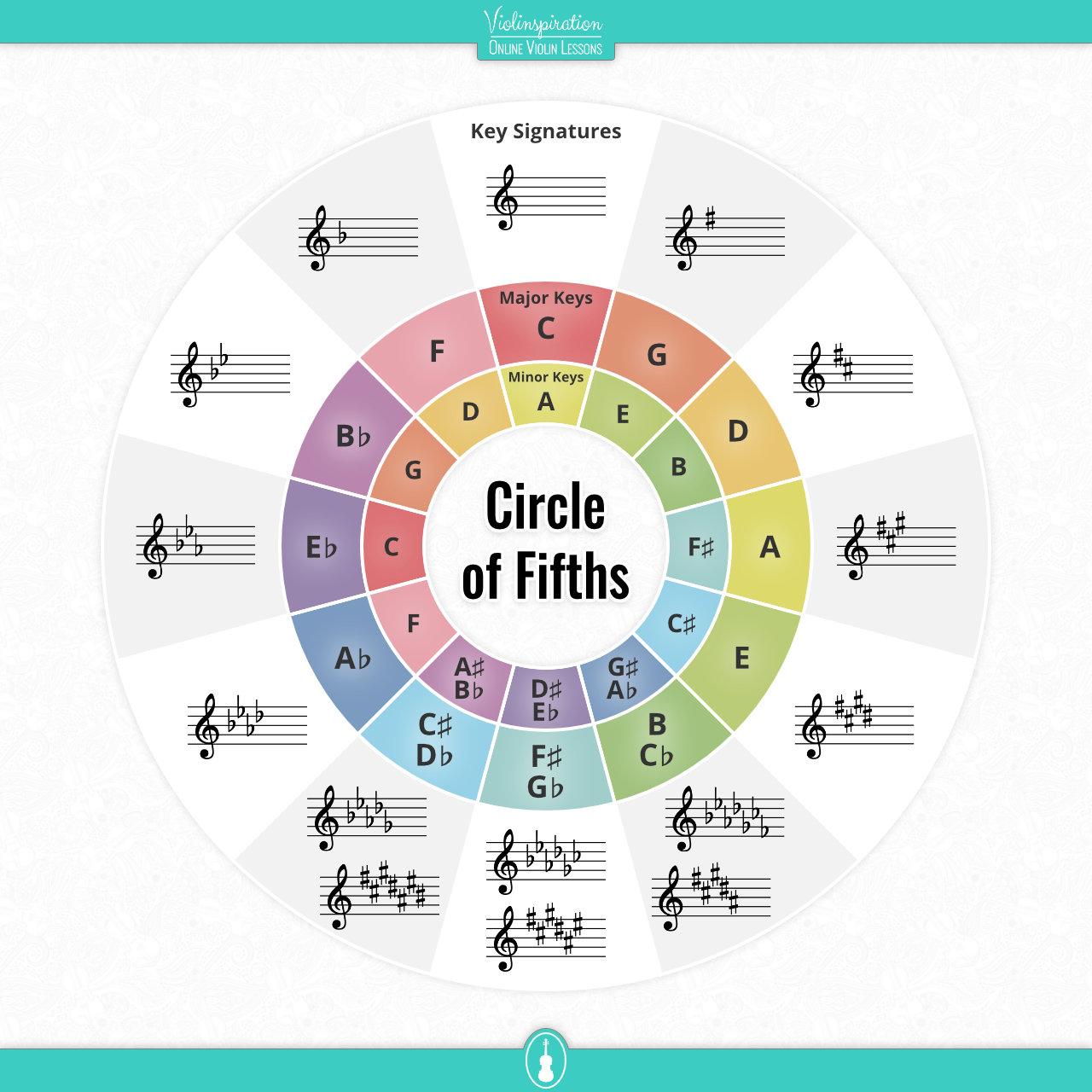Learn about minor keys, the three types of minor scales, and how to listen for minor chords!
Ever wondered why certain songs tug at your heartstrings? Minor keys are often behind the most emotional moments in your favorite music.
In this post, I go over the different minor scales, including how to identify the three different types, their unique sounds, and when they’re used. Also, you’ll learn here about minor chords, the difference between major and minor, and how to listen for these sounds within music.
I know that learning music theory can seem daunting, but understanding the why behind the music will help you understand your violin music on such a deeper level. Let’s dive right in!
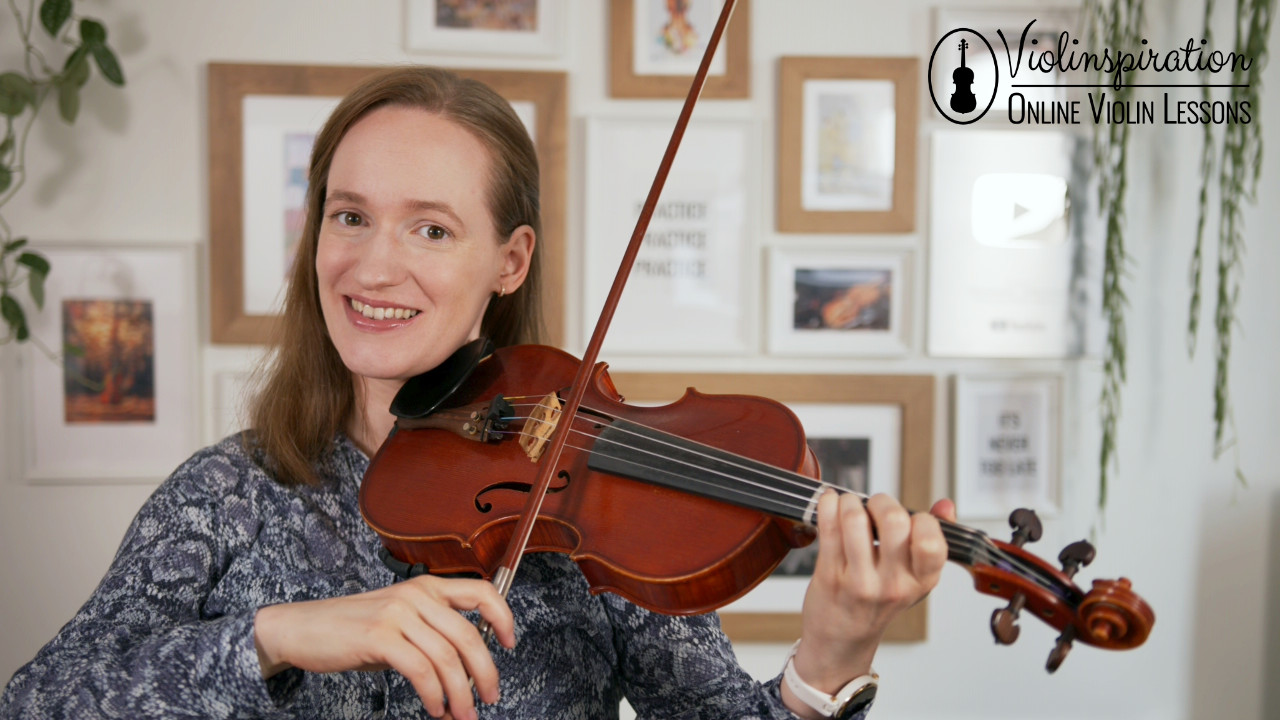
Understanding Minor Key Signatures
We often associate music with emotions, and minor keys play a significant role in this.
What is a minor key?
A minor key is made up of seven individual notes just like a major scale, but lowering three specific notes changes the tonal quality and gives us the minor sound.
The emotional feeling of minor keys is not just a matter of music theory. When we hear a song in a minor key, it triggers certain parts of our brain associated with feelings of sadness and grief.
Minor Chords = Sad?
Why do minor chords sound so sad?
Our ears have been trained to think of minor chords as sad, and major chords as happy. Composers of Western music have largely written this way for hundreds of years. Even in 1787, German composer Christian Schubart said that major scales sound happy and minor scales sound sad in his essay, Characteristics of the Musical Keys.
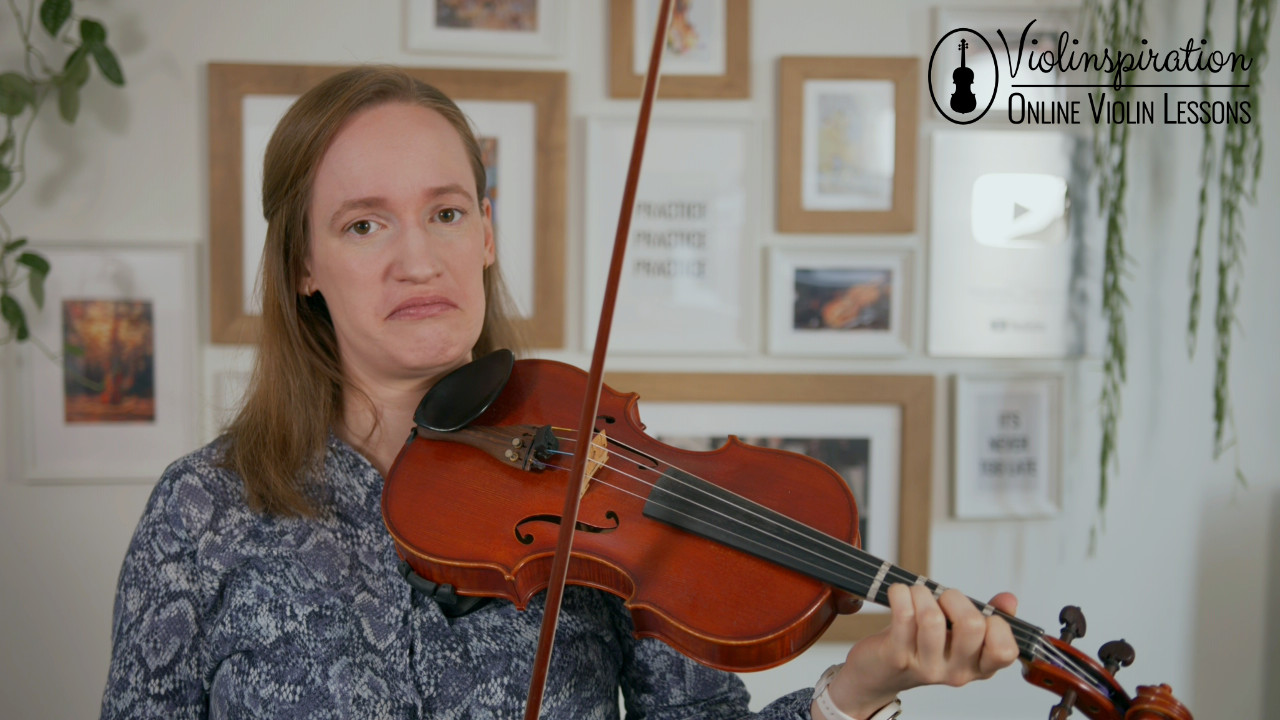
You may feel a range of emotions when you hear music written in a minor key. Common feelings may be sadness, melancholy, grief, longing, tension, or even mystery.
The next time you listen to a song in a minor key, pay attention to how it makes you feel. You might be surprised by the emotions it evokes!
Major vs. Minor: A Contrast in Tonality
Major and minor are two sides of the same coin; major chords are generally associated with happiness, while minor chords represent sadness. They are, however, built on very similar principles.
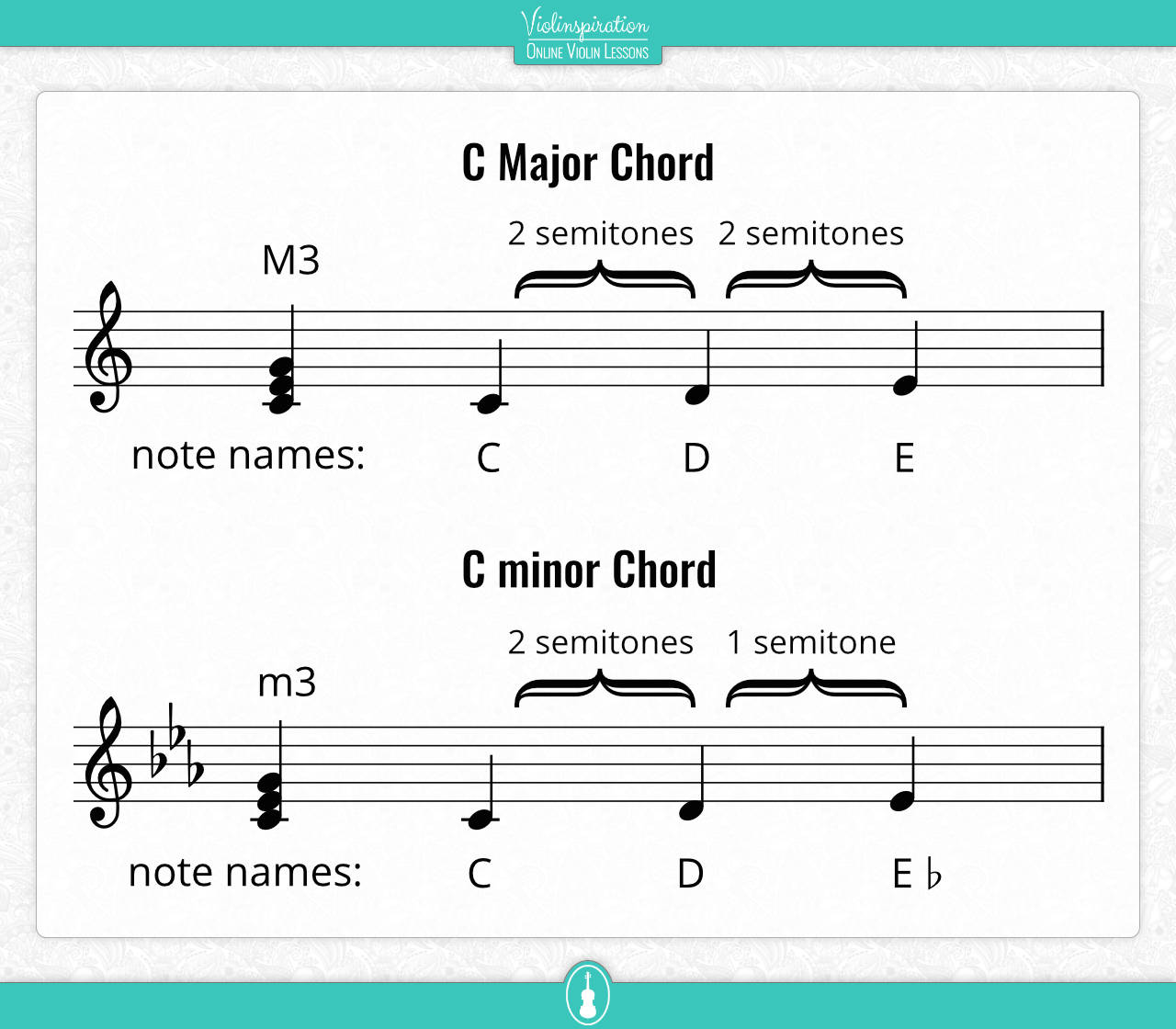
The difference between them is the intervals between the notes within the chord.
In a major chord, the interval between the first two notes is a major third, giving it a brighter, happier sound. In contrast, a minor chord has a minor third interval between the first two notes. This generally gives the chord a darker, sadder sound.
Relative and Parallel: The Two Relationships between Major and Minor Key
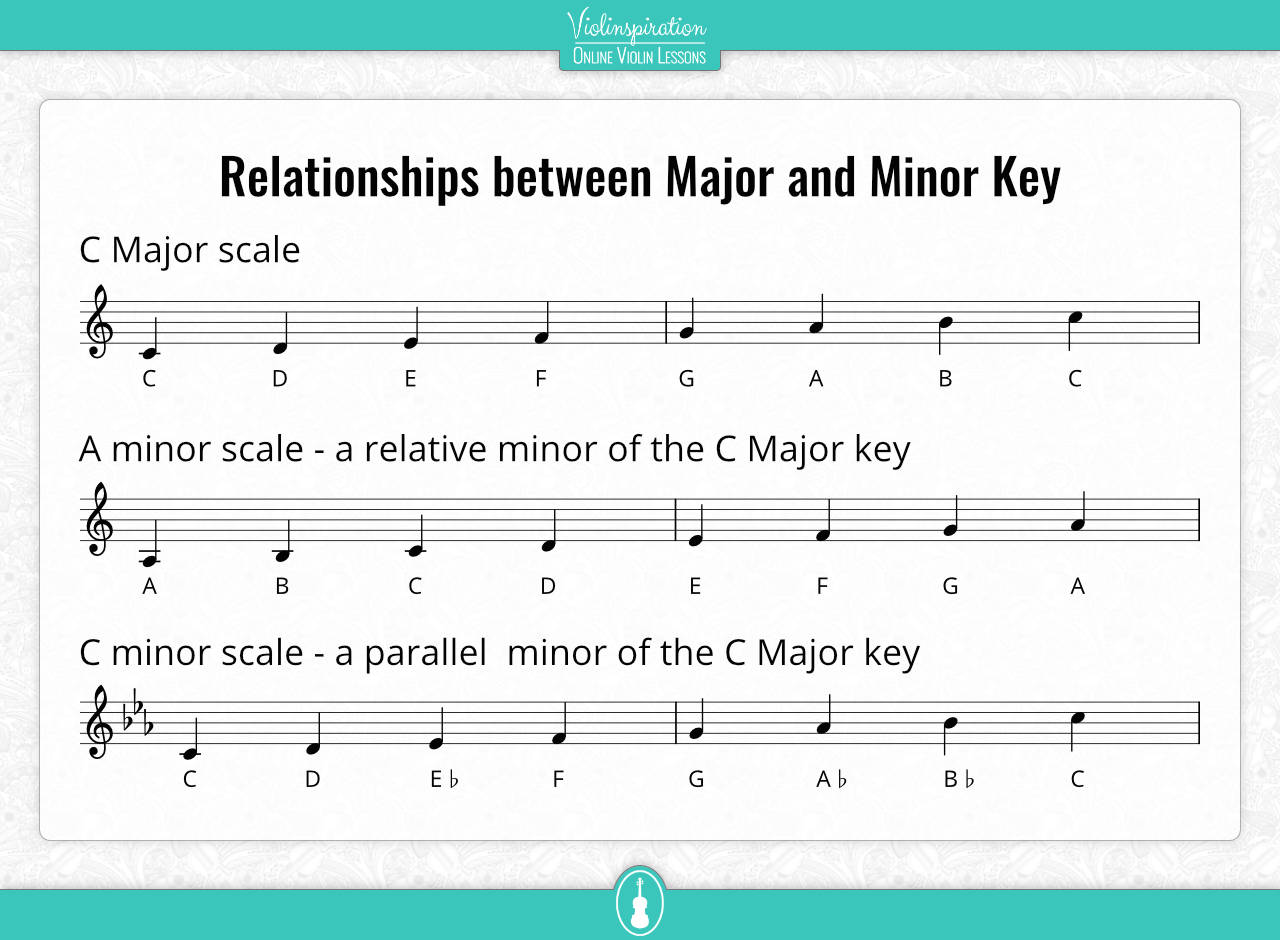
Every minor key has both a relative major key and a parallel major key. The relative major key and the minor key share the same key signature, but they start on different notes. This means that they contain the same pitches, but they have different tonal centers.
The parallel major key, on the other hand, has the same starting note as the minor key but uses a different key signature.
Finding the Relative Minor Key
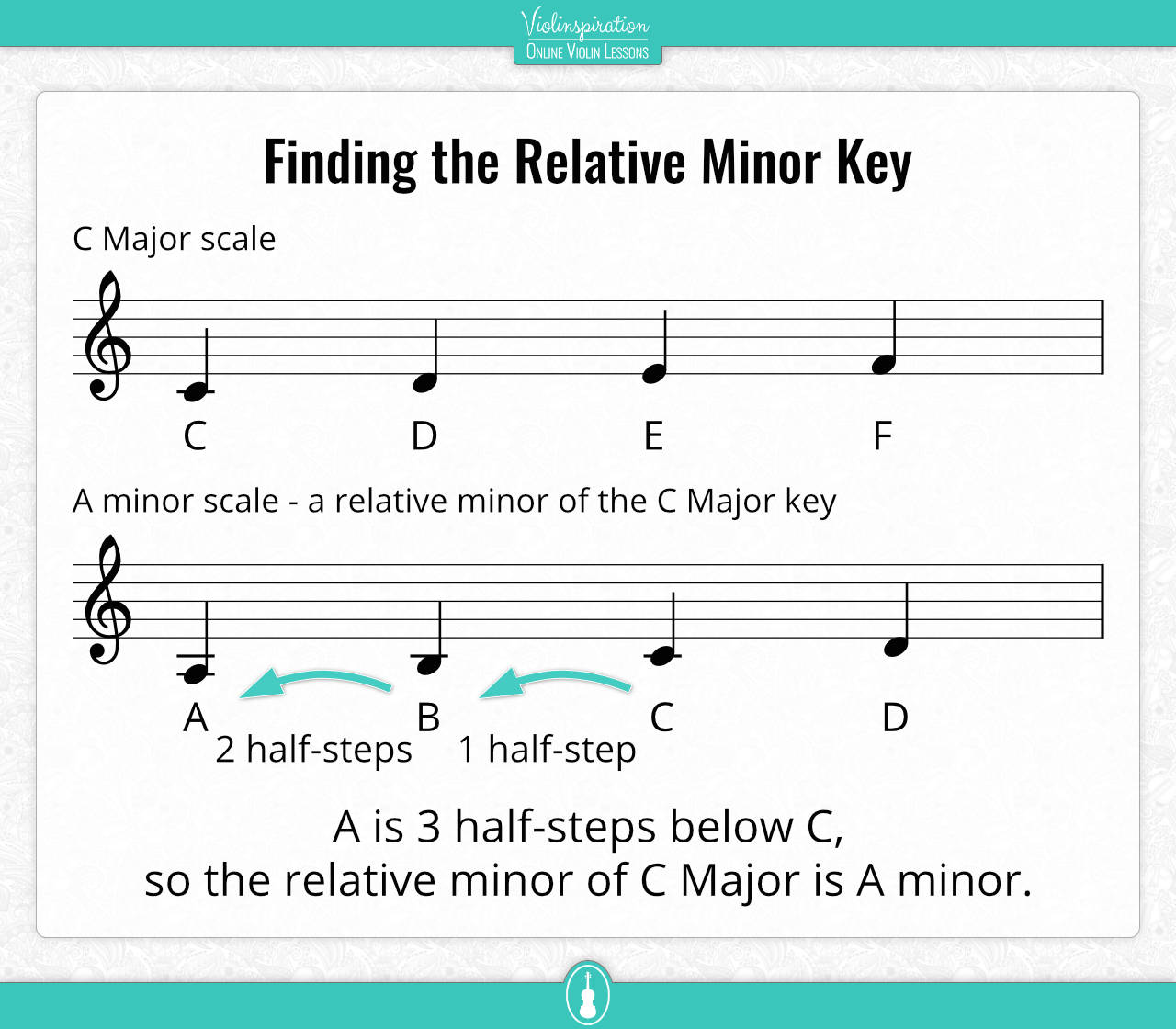
Finding the relative minor of a major key is a fairly straightforward process. The relative minor is located three half-steps lower than its relative major. Include all sharps or flats from the relative major scale.
It’s so helpful to know the relative minor key. The more you know about minor keys, the better you’ll recognize the switch between major and minor tonalities within the music you play and listen to.
Bridging Parallel Keys: Comparing Major and Minor
Parallel minor and major keys have the same starting note but contain different scale notes. This means that while they share the same tonic, the major key and its parallel minor scales have different relationships between the notes. I’ll explain this in detail shortly!
The switch between parallel major and minor keys can dramatically change the mood of a song. When a song goes from a major key to its parallel minor key, it becomes darker and somber. You’ve probably already heard this switch in many songs!
The Anatomy of Minor Scales
There are three types of minor scales: natural minor, harmonic minor, and melodic minor. Each of these scales has a unique character and serves a distinct purpose in music composition.
When we discuss the makeup of minor scales, we’ll talk about the notes of the scale as numbers. These are called scale degrees: the number assigned to a note based on where it is in the scale. Raising or lowering certain notes, based on where they are within the scale, will give us a major or minor sound. Let’s take the A Major as an example:
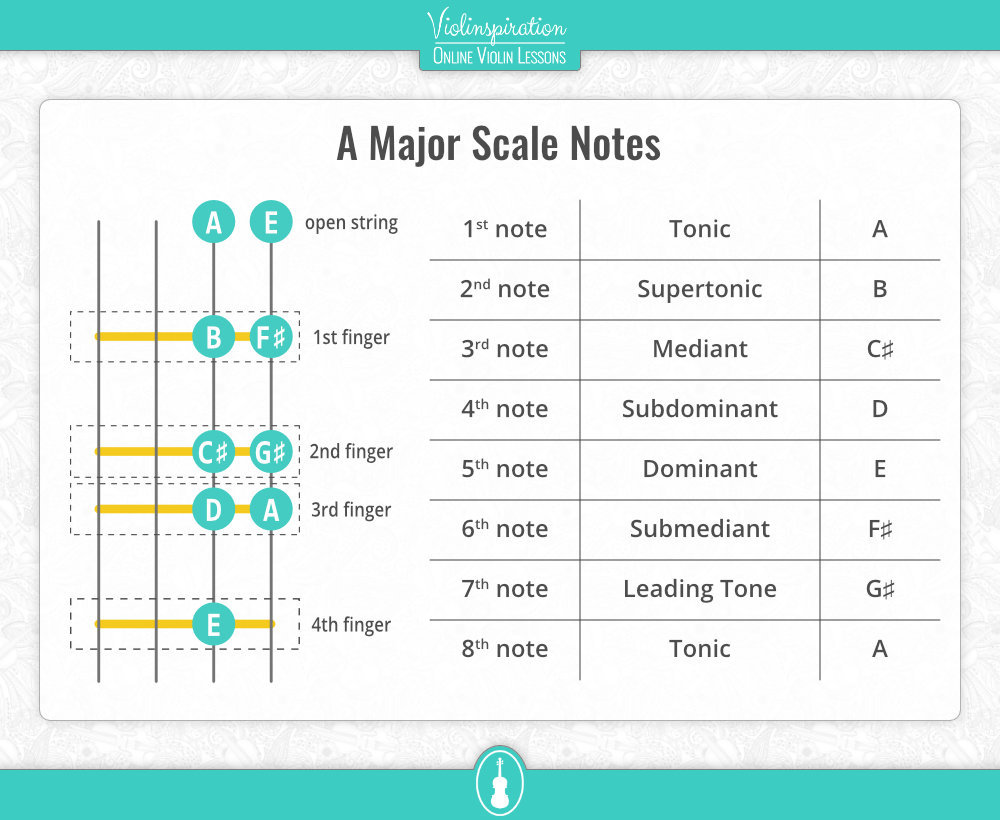
Each scale also has its own pattern of half and whole steps. For reference, any major scale has the pattern whole, whole, half, whole, whole, whole, half.
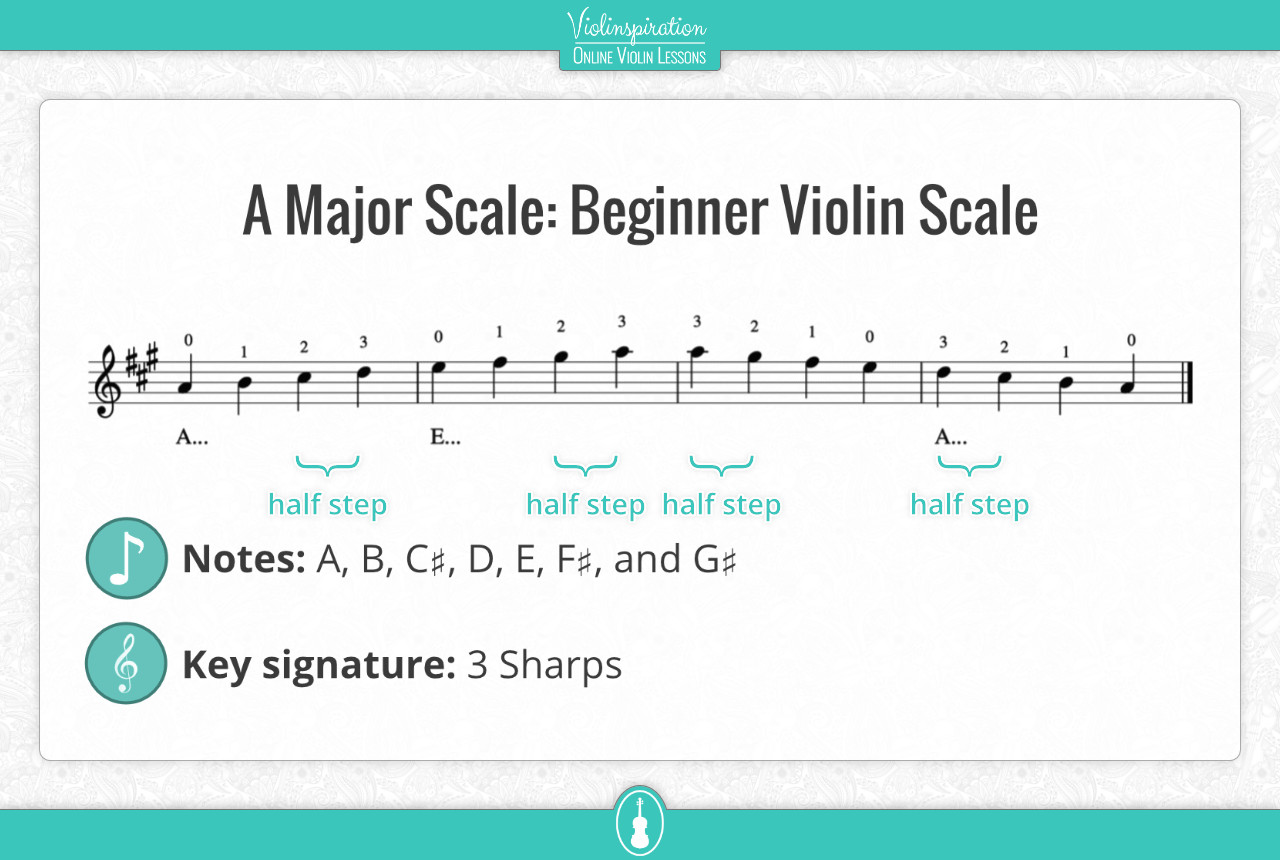
Natural Minor Scale
The natural minor scale is the most simple of the three types of minor scales and is essentially the building block of minor music.
The half and whole steps pattern of a natural minor scale is: whole, half, whole, whole, half, whole, whole.
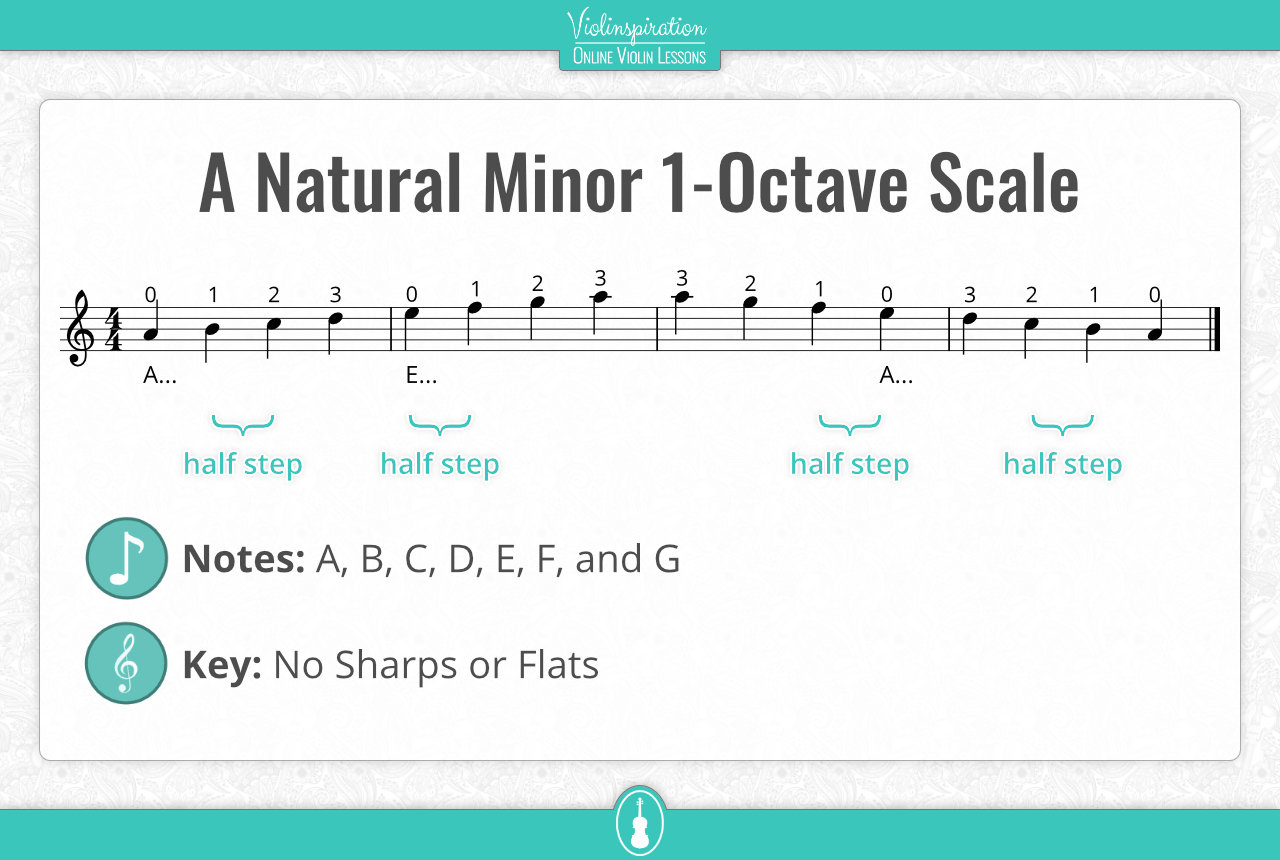
In comparison to the parallel A Major scale, we lower the 3rd, 6th, and 7th notes of the scale. In the case of A minor, these notes are C natural (lowered from C sharp), F natural (lowered from F sharp), and G natural (lowered from G sharp).
While I don’t see the natural minor scale pop up melodically all that much within our violin repertoire, this is the most basic minor scale, and the chords and many ideas regarding minor keys are built off of this version. It’s very helpful to learn this minor scale first so that you can compare the other types of minor scales to it.
Harmonic Minor Scale
The harmonic minor scale is similar to the natural minor scale but with a twist. The harmonic minor scale raises the seventh note, creating an augmented second interval between the lowered sixth and raised seventh degrees, giving it a distinctive sound.
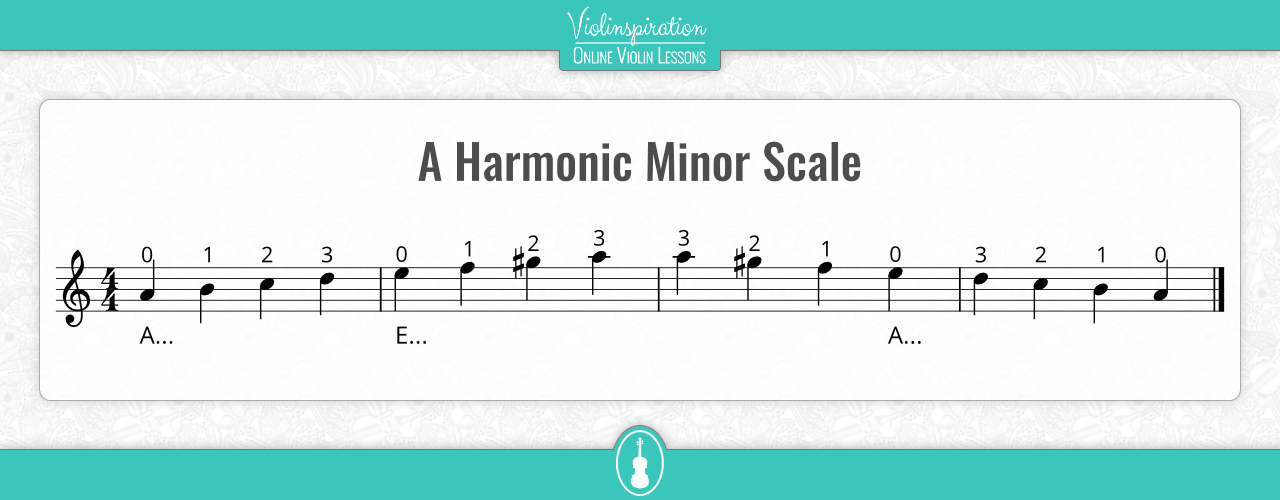
This raised seventh note brings a whole new dimension to the harmonic minor scale: tension. It acts as a leading tone, adding tension and creating a strong sense of resolution when it resolves to the tonic. This amps up the dramatic effect of the music, making the harmonic minor scale the perfect choice for compositions that need a touch of drama and suspense.
Melodic Minor Scale
Finally, we come to the melodic minor scale. This one has a dual nature that sets it apart from the natural and harmonic minor scales, as well as major scales. The melodic minor scale always has a lowered third on the way up and down. In the ascending form, we keep the sixth and seventh degrees raised, like the major scale. The descending melodic minor scale, however, lowers those two notes on the way down.
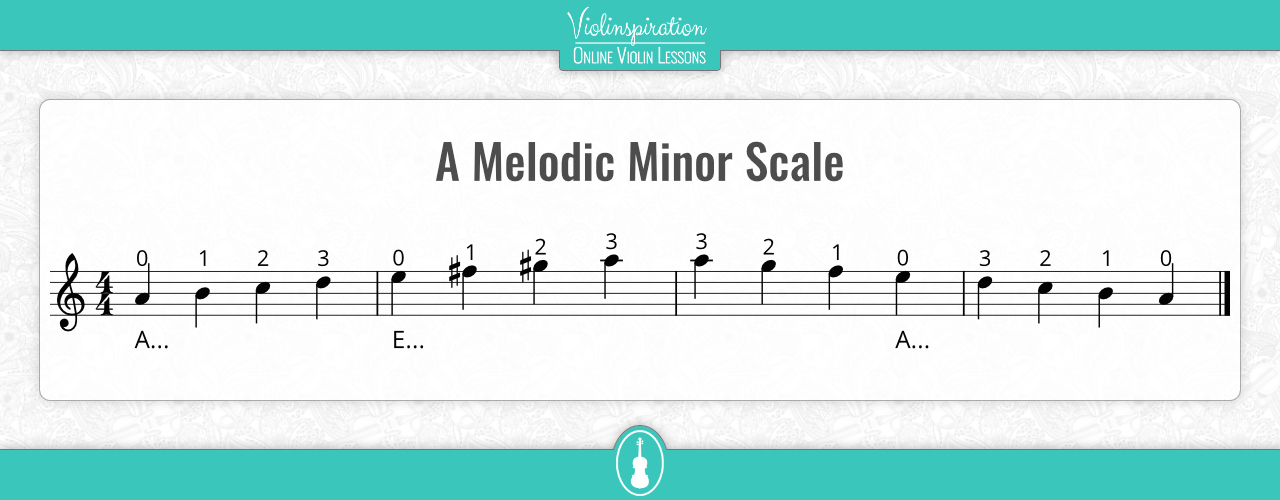
This type of minor scale almost sounds happy on the way up with the raised tones, but it sounds extra sad on the way down, thanks to the two lowered notes. You may notice that the descending form is exactly the same as the natural minor scale.
The melodic minor scale:
- Adds a major/minor ambiguity that makes the music more interesting
- Creates tension with tritones (an interval made up of three whole steps, that generally sounds very dissonant)
- Serves as the perfect base for complex, expressive music
A great example of the melodic minor scale in practice is in the second full measure of J.S. Bach’s Bourree in E Minor. C and D are sharp on the way up to E, and on the way down, they’re lowered as C natural and D natural.
Minor Key Signatures and the Circle of Fifths
The Circle of Fifths is a wheel that shows the order of major keys and their relative minor keys. It’s a helpful reference to find the key signature of a piece or to see how different keys might be related.
The Circle of Fifths is also a tool for creating. We can also use the Circle of Fifths to:
- compose new music in various keys
- decide on key signatures
- change the key of existing music.
The Circle of Fifths is a very helpful tool for many of us!
Finding Minor Key Signatures with the Circle of Fifths
The Circle of Fifths visually connects all the key signatures, making it easy to see how they relate to each other, particularly the relative major and minor keys.
With my Circle of Fifths diagram, you can find the relative minor of a major key by finding the major key on the outside ring. Inside, the relative minor is shown. Again, a minor scale shares the same key signature as its relative major.
Understanding the Circle of Fifths is very helpful in that it can help you remember key signatures, see the relationships around keys, and feel more comfortable navigating your instrument. It can also help you get more creative using chords and creating your own chord progressions!
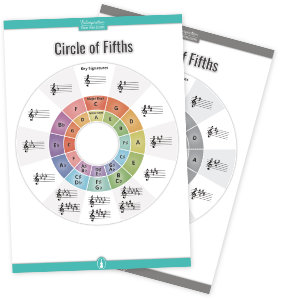
Printable Circle of Fifths
color and grayscale version
If you’d like to learn more about the Circle of Fifths, chord progressions, and transposition (among others), click here to watch lessons from the series Music Theory: The Language of Music – only for Julia’s Violin Academy members.

Identifying Songs in Minor Keys
Identifying songs in a minor key can be difficult at first, but it’s a great way to strengthen your aural (listening) skills!
To find whether a song is major or minor, listen for the tonic (the first note of a scale in a given key), analyze the emotions you feel, and try to pay attention to the intervals between the notes.
If you hear a lot of minor chords in the bass line, this is also a strong indicator that the song, as a whole, is in a minor key!
Listening for the Tonic in Minor Melodies
The tonic is the first note of a scale; the same name as the scale itself. The tonic is also sometimes referred to as the “home note” of a key. Many songs from all genres start and end on the home note, with a tonic chord underneath.
Identifying the tonic note in a melody can help you figure out the key of the song and understand the structure of the melody.
Improving your ability to identify the tonic in music can help you understand music better. It helps improve your musical memory and overall ear training, which are crucial for interpreting and creating music with depth.
Popular Music in a Minor Key
One of the well-known pieces in a minor key is Bach’s Chaconne from Violin Partita No. 2 – it is in D Minor.
Quite a few popular songs of all genres are in minor keys. Here are a few that you might recognize:
Classical Works in a Minor Key
- Beethoven’s Symphony No. 5
- Summer from Vivaldi’s The Four Seasons
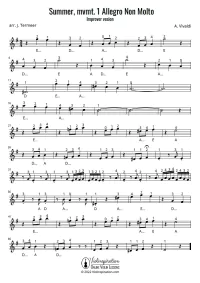
Free Violin Sheet Music
Summer, mvmt. 1: Allegro Non Molto by A. Vivaldi
- Bach’s Double Violin Concerto
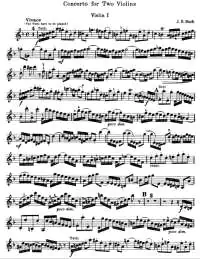
Bach – Concerto for 2 Violins in D minor
- Tchaikovsky’s Symphony No. 6
-
Mozart’s Symphony No. 40
-
Shostakovich’s Waltz No. 2
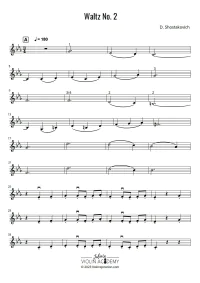
Free Violin Sheet Music
Waltz No. 2 by Dmitri Shostakovich
Pop and Rock Songs in a Minor Key
- Señorita by Camilla Cabello and Shawn Mendes
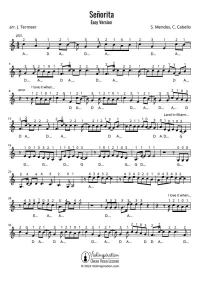
- Scarborough Fair by Simon & Garfunkel
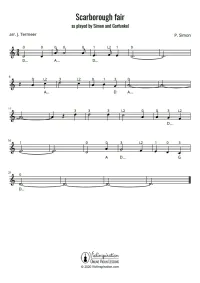
Free Violin Sheet Music
Scarborough Fair
- Stairway to Heaven by Led Zepplin
Movie and Pop Culture Songs in a Minor Key
- Game of Thrones Theme
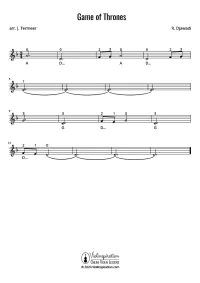
- Hedwig’s Theme from Harry Potter
-
The Last of Us Theme
Frequently Asked Questions
Now let’s go through your most common questions.
What keys are minor?
Any key can be minor, as long as it follows the whole/half step minor pattern which is: whole, half, whole, whole, whole, whole. The minor keys shown on the Circle of Fifths are ordered as follows: A, E, B, F#, C#, G#/Ab, D#/Eb, A#/Bb, F, C, G, and D.
What is the pattern of the A minor scale?
The pattern of A minor scale starts on note A and contains the pattern: whole step, half step, whole step, whole step, whole step, whole step.
This is the natural minor scale pattern, which is the most basic form of the minor scale.
Is A minor the same as C Major?
No, A minor is not the same as C Major. These scales are relative, so they have the same set of notes (the same key signature), just different starting notes. The A minor scale is A-B-C-D-E-F-G-A, while the C Major scale is C-D-E-F-G-A-B-C.
All the notes are natural (there are no sharps or flats in these scales), but they have different tonal centers.
What’s the difference between a major and a minor chord?
A major chord is made up of the 1st, 3rd, and 5th notes of its scale. There’s a major third interval (4 semitones) between the first two notes of a major chord. A minor chord is built off the same notes of its scale, but the interval between the first two notes is instead a minor third (3 semitones).
It’s generally easy for a lot of us to hear the difference between a major chord and a minor one; major chords usually sound happy, while minor chords almost always sound sad.
How do you find the relative minor of a major key?
To find the relative minor of a major key, simply go three half-steps down from the major key. That will give you the relative minor key.
A relative minor has the same key signature as its relative major, but they have different tonal centers. For example, F Major and D minor both have one flat in the key signature (B flat), but F Major’s tonic note is F, while D minor’s tonic is D.
Final Note & Further Reading
Minor keys add depth and complexity to the music. Understanding their structure, their relationship with major keys, and how to identify them can enhance your musical understanding and creativity on the violin. Listening for minor keys is also a great way to strengthen your musical ear!
If you enjoyed learning about minor keys, I think you might enjoy reading D Minor Scale on the Violin. D minor is a great first minor scale to learn to play on the violin. Put the knowledge you gained today into practice!
Or, if you’d like more reference reading, learn about the most commonly used Italian music terms and what they mean in English!

